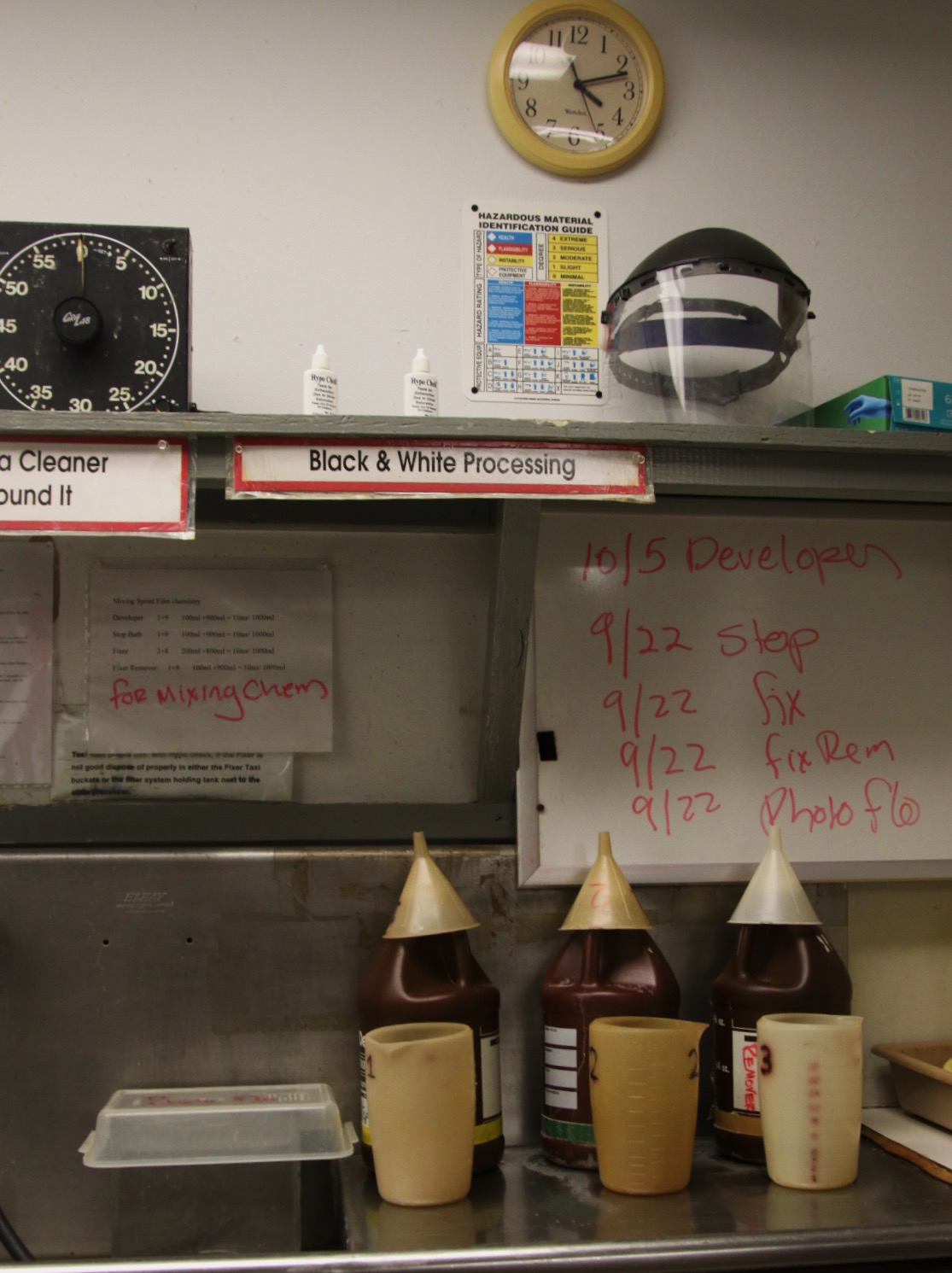By Nex Staples, Staff Writer
Camouflaged in the back corner of the Robie Andrews building at USM is the Art Department, its glass framed door that opens the barrier between brick and self expression. A maze of art covered walls greets those entering- printed owls, delicate hands cradling butterflies, and other pieces of all different genres and mediums provide the spark of the creative and awe-inspired fire in one’s heart. Students granted admittance to the space may be shown through the wonderland by kind-hearted Jen McDermontt, part-time Associate Professor of Art. Being led by McDermontt through the downstairs, potentially leading to one of the most interesting and historical expansions of the area: the Photo Lab.
The Photo Lab started budding into what it is today in 1979. Rose Marasco, the first female photography professor, took the scraps of what little the department had, one small space and barely a seed of a program, and put them in well-watered soil, aiding them in their bloom.
The influential woman started her career by exhibiting her photographs at the Munson Williams Proctor Art Institute of New York at age 23. The students and faculty responded favorably to the work which resulted in her being hired to initiate the school’s photography program the following year. She taught there for 5 years before arriving at USM. After which encouraged eager students to push the school for photography classes and pathways, the program that Marasco was asked to head. It was partially this experience that led her to continue down this road, spending 35 years at USM teaching. Even writing the school’s photography degree program and designing everything along the way.
What was originally only film soon grew to include film, color, and digital. The lab changed along with time and became a place where students could feel safe to experiment with their creative minds and self expression, while also sticking to the program’s roots and history. As both Marasco and McDermontt stated, it’s important to have the basics and lingering memories of the past, so that students are provided with not only a stronger connection to themselves, but to the process, and to other people- both breathing and buried.
Film developing is a centuries old art, the closest to today originated in 1889 by George Eastman and his Kodak Model 1 camera. The practice links together generations of photographers, their stories connected by the weight of the camera in their hands. After witnessing the beauty they want captured and trapping it in their film, students hang their negative, waiting for it to dry before bringing it into the dark room. McDermontt described the amber light as soothing and one of her favorite aspects of the room. When the fluorescents are turned off and replaced by the glow, the darkroom becomes almost haunting, turning flesh a sickly green-gray, almost as if the workers are a part of the photo themselves.
In the darkness lies intimacy, shared between both the artists and their prints. A negative is projected onto light sensitive paper held by an easel, the paper reacting to the shadows and luminescence, the light making an impression of the image based on the values of the negative itself, almost like drawing a picture. A process that McDermontt described as magical, both to participate in and to witness. It is during this stage that contrast can be added or stripped, and the photo shrunken or enlarged. The paper is then placed in chemicals (developer, stop bath, and fixer) and placed on the drying rack. Throughout this procedure, light plays a major factor, as a picture can be ruined by too much time in the light or in one of the baths.
The lab is home of innovation and imagination, resting in it’s calloused palms a significance greater than many know of or believe to be true. Film provides a different medium, a different outlet, for photographers. McDermontt compared only using one practise of photography to a painter only being able to create with watercolor- while the end result may still be breathtaking, something is lost or missing. The practice grants students patience, not only as they are in charge of every alteration, but also because everything is most likely new, meaning mistakes are common and allow for personal growth. Students there not only learn from their own mistakes, but from those of others. Teaching each other through communication and creating community within the confined space.
Marasco praises photography for this community, and adores the connection not only to those in proximity, but also between a photographer and their camera, the love that is held in looking through the lense, the feeling of being a part of something. She also recognizes one of the societal importances of film, noting that resources such as photoshop and the tools inside of them often emulate those that originated with film.
“People think that everything is better, but I’m not too sure on that myself, ” she says.
The Photo Lab is a setting that allows students to be their full-selves and explore whoever that may be. The space encourages individuality and community, linking the past and present in bewitching ways. The light-drawing practise of photography is enchanting, no matter the tool used, and students interested in exploring it are encouraged to engage in a photography class and take advantage of the school’s still newly-developed resources. Even the smallest flicker of curiosity is welcome. “I followed my heart and it worked for me, that’s all we can do” Marasco said with a smile.

